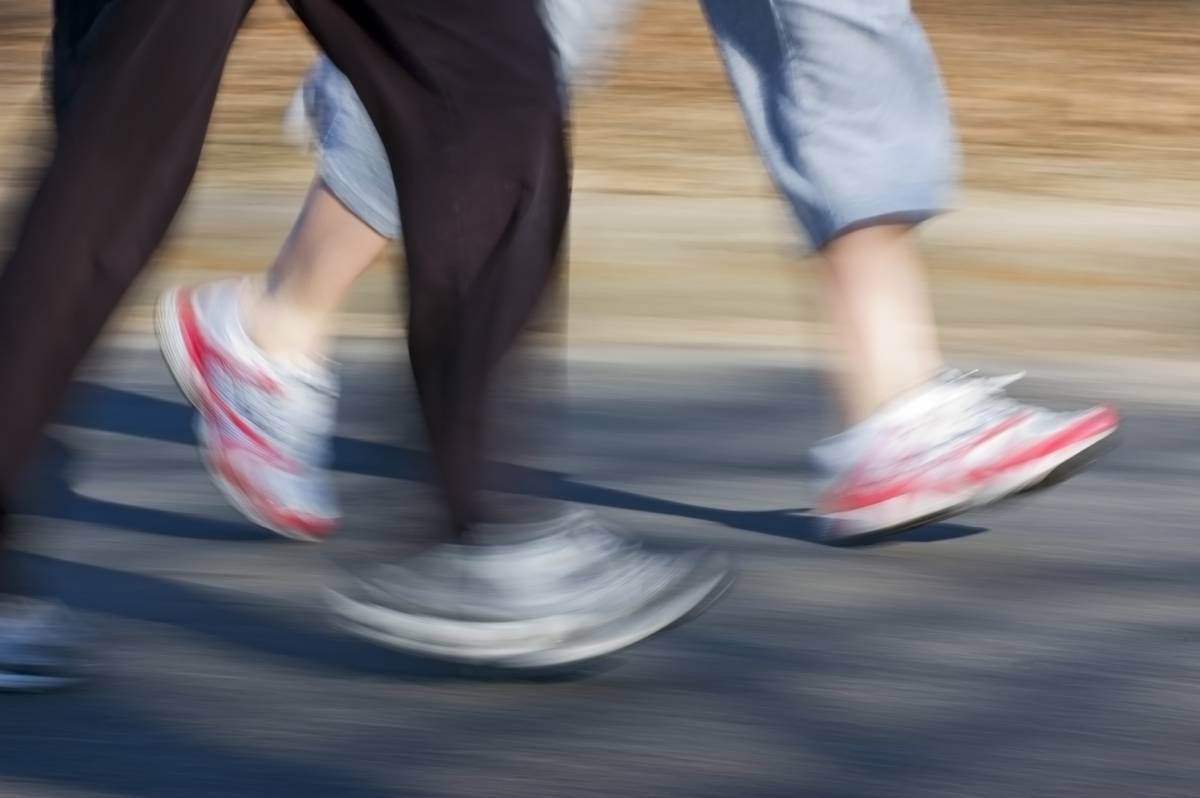Faster walking speeds are linked to a significantly lower risk of developing type 2 diabetes
Walking at a speed of four kilometres (km) an hour or more is linked to a significantly lower risk of type 2 diabetes, according to the results of a study based on a pooled data analysis of the evidence.
The results appear in an article written by a small international team led by Ahmad Jayedi, from the Social Determinants of Health Research Center at Semnan University of Medical Sciences in Iran, that is published online today (29 November) in the British Journal of Sports Medicine.
Dr Jayedi and colleagues found that the faster the speed above four km/hour, the lower the risk seems to be, with every single km increase in speed associated with a 9 per cent reduction in risk.
The researchers looked for relevant long-term studies published up to May 2023 and found 10 that were eligible for inclusion. These had been published from 1999 to 2022 and included monitoring periods ranging from three to 11 years for a total of 508,121 adults from the USA, Japan and the UK.
Brisk walking yields dividends
Pooled data analysis of the results showed that compared with strolling at less than two miles or three km/hour, an average or normal walking speed of two-three miles or three-five km/hour was associated with a 15 per cent lower risk of type 2 diabetes, irrespective of the time spent walking.
Similarly, fairly brisk walking at a speed of three-four miles/hour or five-six km/hour was associated with a 24 per cent lower risk of type 2 diabetes compared with strolling.
Brisk walking or striding at a speed above four miles or six km/hour was associated with a reduced risk of around 39 per cent, equal to 2.24 fewer cases of type 2 diabetes in every 100 people.
Fairly brisk and brisk/striding walking, independent of the total volume of physical activity or time spent walking per day, may be associated with a lower risk of type 2 diabetes in adults [Ahmad Jayedi et al]
Every one km/hour increase in walking speed was associated with a nine per cent lower risk of type 2 diabetes, with the minimal threshold of four km/hour equal to 87 steps/min for men and 100 steps/min for women, the findings suggest.
The researchers acknowledge that three studies were rated as having a moderate risk of bias while the other seven were rated as having a serious risk, principally due to inadequate adjustment for potentially influential factors and the way in which walking speed had been assessed.
Another factor to consider is reverse causality whereby participants with faster walking speed might be more likely to be physically active and have better cardiorespiratory fitness, greater muscle mass, and better overall health status.
Caveats and conclusions
The researchers warn that the findings need to be interpreted in light of these limitations but suggest there are plausible explanations for them.
Walking speed is an important indicator of overall health and a key indicator of functional capacity; faster walking speed is associated with better cardiorespiratory fitness and muscle strength, both of which are linked to diabetes risk; and brisk walking is good for weight loss, which helps to improve insulin sensitivity.
Dr Jayedi and his colleagues conclude: ‘The present meta-analysis of cohort studies suggests that fairly brisk and brisk/striding walking, independent of the total volume of physical activity or time spent walking per day, may be associated with a lower risk of type 2 diabetes in adults.'
They add: ‘While current strategies to increase total walking time are beneficial, it may also be reasonable to encourage people to walk at faster speeds to further increase the health benefits of walking.’
Fact file
While regularly nipping out for a stroll is associated with a lower risk of developing type 2 diabetes, it’s not clear what the optimal speed might be to ward off the disease, say the researchers.
The global number of adults with type 2 diabetes stands at 537 million, and is expected to reach 783 million by 2045. Thus, a simple and inexpensive physical activity that is also associated with several other social, mental, and physical health benefits, might be an easy way of helping to stave off the disease, Dr Jayedi and his colleagues add.
To read the full version of the article – titled Walking speed and the risk of type 2 diabetes: a systematic review and meta-analysis doi: 10.1136/bjsports-2023-107336 – click
Author: I A McMillanShare it with















